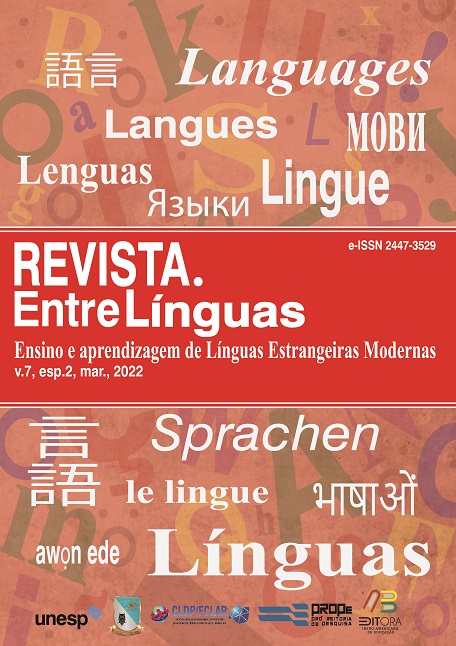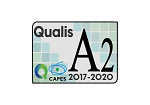Genre-thematic features of a fiction-documentary story in the adyghe (adyghe, kabardian, and circassian) literatures
DOI:
https://doi.org/10.29051/el.v8iesp.2.17326Keywords:
Adyghe (Adyghe, Kabardian, Circassian) literature, Documentary, Artistic traditionAbstract
The study of the moral, aesthetic, spiritual, historical, and cultural characteristics in any nation through the analysis of national fiction is an essential method to understand modern society since reality is the object of its representation. Therefore, in this presented article, attempts are made to identify the peculiarities of the worldview of a modern artist, stable models for constructing a fictional documentary text, and the variety of authentic and conventional imagery in the genre of the story.It should be emphasized that this genre recreates a holistic picture of the ethnocultural development of the Adyghe peoples (Adyghe, Kabardians, Circassians), reflecting their spiritual heritage, which makes it possible to take a worthy place in the literary process of the 20th century. The relevance of the research is determined by its innovative nature associated with the analysis of unexplored works of the Adyghe literature. According to the study results, it was concluded that the study of the tendency in the development of national literature from the point of view of borrowing aesthetic experience, structural models, motives, images, artistic and visual means, and methods of oral folk art, it also has features that bring them closer to the documentary prose of the literature North Caucasus folks. The results obtained have theoretical significance for the further coverage of national literature. They can provide significant practical guidance during the research of the historical dynamics of national literature in the context of interaction with the literature of other ethnic groups of the Russian Federation and in the preparation of special courses in universities and colleges.
Downloads
References
ANDREEV, Yu. According to the laws of art (on the nature of documentary). Questions of literature, n. 2, p. 28–49, 1979.
BOZIEVA, N. Searches for the synthesis of reality and the artistic world in the documentary stories of M. Karmokov. News of the Kabardino-Balkarian State University, n. 1, p. 67–70, 2013.
GINZBURG, L. Life material and artistic generalization. Questions of literature, n. 9, p. 21–27, 1966.
IVANOVA, L. V. Modern Soviet prose about the Great Patriotic War. Moscow: "Science", 1979.
JANET, K. Khusen Andrukhaev: Per. from Adyg. Moscow: Politizdat, 1974.
KAUFOV, H. Kh. The eagle dies in flight. Nalchik: Elbrus, 2011.
KAUFOV, H. Kh. The forest is made up of individual trees. Nalchik: Elbrus, 1977.
LOMIDZE, G. I. Moral origins of the feat. Moscow: "Soviet writer", 1985.
MURAVYOV, V. Literary encyclopedic dictionary. Moscow: "Soviet Encyclopedia", 1987.
SHAZZO, K. Artistic conflict and the evolution of genres in the Circassian literature. Tbilisi: Metsniereba, 1978.
SHKLOVSKY, V. B. Favorites in 2 volumes. Moscow: "Fiction", 1985.
TIMIZHEV, K. T.; BOSIEVA, N. B. Moral-ethical aspects in the essays about the war in kabardian literature. [Nravstvenno eticheskie aspekty v ocherkakh o voyne v ka bardinskoy literature]. Krasnodar. Istoricheskaya i sotsial'no-obrazovatel'naya mysl. Historical and Social Educational Ideas, v. 2, n. 7, p. 282-287, 2015.
TLEPTSERSHE, H. G. The criterion is exactingness. Problems of the Adyghe novel and story. Maykop: Adyg. rep. book Publishing house, 2008.
TSURIKOVA, G.; KUZMICHEV, B. Statement of identity. Essays on the hero of modern documentary and fictional prose. L.: Fiction, 1975.
YANSKAYA, I. S.; KARDIN, E. V. Limits of Reliability: Essays on Nonfiction Literature. Moscow: Soviet writer, 1981.
YAVCHUNOVSKY, Ya. I. Documentary genres: Image, genre, structure of the work. Saratov: Saratov University Publishing House, 1974.
Published
How to Cite
Issue
Section
License

This work is licensed under a Creative Commons Attribution-NonCommercial-ShareAlike 4.0 International License.
Os manuscritos aceitos e publicados são de propriedade da Revista EntreLínguas. Os artigos publicados e as referências citadas na Revista EntreLínguas são de inteira responsabilidade de seus autores.
Transferência de direitos autorais – autorização para publicação
Caso o artigo submetido seja aprovado para publicação, já fica acordado que o(s) autor(es) autoriza(m) a UNESP a reproduzi-lo e publicá-lo na EntreLínguas, entendendo-se os termos “reprodução” e “publicação” conforme definição respectivamente dos incisos VI e I do artigo 5° da Lei 9610/98. O artigo poderá ser acessado pela rede mundial de computadores (Internet), sendo permitidas, a título gratuito, a consulta e a reprodução de exemplar do artigo para uso próprio de quem a consulta, desde que haja a citação ao texto consultado. Essa autorização de publicação 328 EntreLínguas, Araraquara, v. 1, n .2, p. 323-328, jul./dez. 2015 não tem limitação de tempo, ficando a UNESP responsável pela manutenção da identificação do(s) autor(es) do artigo. Os artigos publicados e as referências citadas na Revista EntreLínguas são de inteira responsabilidade de seus autores.











